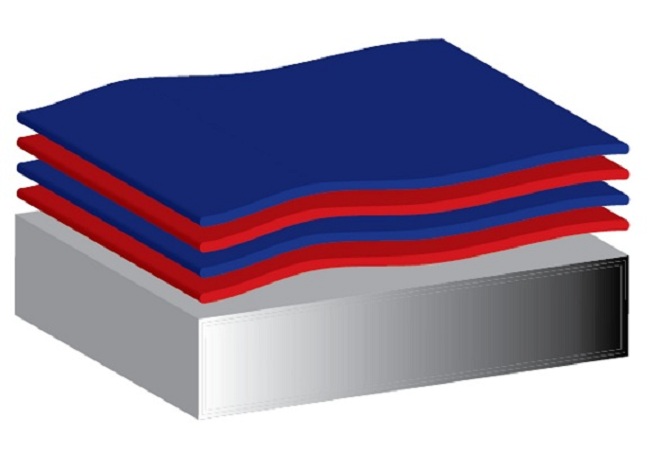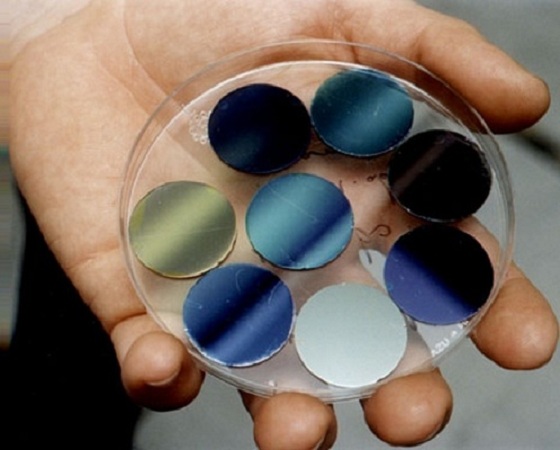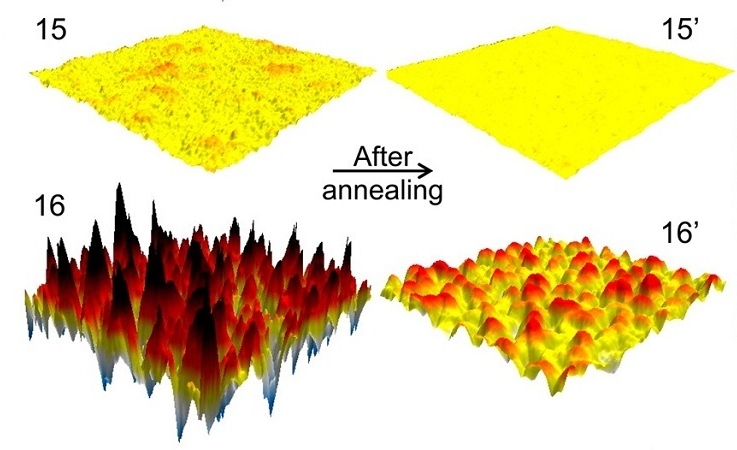Polyelectrolyte Multilayers
Polyelectrolyte multilayers are ultrathin films made from water-soluble polymers: negative and positive polyelectrolytes. If you dip a substrate in these nontoxic polymers alternately, a uniform film builds up - a few nanometers at a time. Our group has been studying these versatile systems for more than a decade and our publications on the subject vary from understanding the fundamentals to modifying their properties and morphology. Multilayers also offer a wide range of applications in the fields of active coatings, selective membranes and biological substrates.
We have established, since their emergence, the presence of intrinsic (polymer-polymer interactions) and extrinsic (polymer-counterions interactions) charges inside these films. We studied their properties with a wide range of techniques available in our lab and department such as Fourier Transform Infrared Spectroscopy (FTIR), Ellipsometry, Atomic Force Microscopy (AFM), radiolabeling of their ionic content, X-ray photoelectron spectroscopy (XPS), electrochemical and electrokinetic measurements. We also used neutron reflectometry at Oak Ridge National Lab to understand their structure.
Selected publications on polyelectrolyte multilayers
- H.M. Fares, Y.E. Ghoussoub, R.L. Surmaitis, and J.B. Schlenoff*; Langmuir, asap (2015), Toward Ion-Free Polyelectrolyte Multilayers: Cyclic Salt Annealing. DOI: 10.1021/la504910y
- M. Ferriz-Manas, J.B. Schlenoff*; Langmuir, 30, 8776-8773 (2014), Zeta Potential of Polyelectrolyte Multilayers using the Spinning Disk Method. DOI: 10.1021/la5015785
- R.A. Ghostine, M.Z. Markarian, J.B. Schlenoff*; J. Am. Chem. Soc., 135, 7636-7646 (2013), Asymmetric Growth in Polyelectrolyte Multilayers. DOI: 10.1021/Ja401318m


